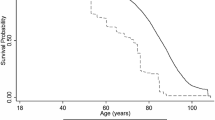Summary
The subjects for study were all parasuicides admitted to the Regional Poisoning Treatment Centre between 1968 and 1973. The parasuicides were divided into four social class groups: Registrar General's Classes I and II; Class III; Class IV; Class V. The characteristics and disposal of parasuicides from each class were compared. A large number of items showed a significant difference across class. Lower class parasuicides were more often characterised by a variety of social problem items including overcrowding, trouble with the law, debt, unemployment and violence in interpersonal relationships. They were more often diagnosed as personality disorders whereas higher class parasuicides were more likely to be diagnosed as depressive. The latter were also more frequently referred to the R. P. T. C. by a medical agent. For higher class patients, after-care more often took the form of in- or out-patient psychiatric treatment; lower class patients were more commonly recommended for social work on discharge. The association between social class and type of after-care was maintained when the diagnostic groups were considered separately. Patients of higher social class within the categories “personality disorder only”, “depression only”, “depression with personality disorder”, “other psychiatric illness with personality disorder” were markedly more likely to receive a psychiatric referral.
Similar content being viewed by others
References
Bernstein, B.: Class, codes and control. Vol. 1, London: Routledge and Kegan Paul 1971
Buglass, D., Horton, J.: The repetition of parasuicide: A comparison of three cohorts. Br. J. Psychiatry 125, 168–74 (1974)
Chowdhury, N., Hicks, R. C., Kreitman, N.: Evaluation of an after-care service for parasuicide (attempted suicide) patients. Social Psychiatry 8, 67–81 (1973)
H. M. S. O. Classification of occupations. London (1966)
Holding, T., Buglass, D., Duffy, J., Kreitman, N.: Parasuicide in Edinburgh: A seven year review 1968–1974. (In preparation) (1976)
Jacobson, S., Tribe, P.: Deliberate self-injury (attempted suicide) in patients admitted to hospital in mid-Sussex. Br. J. Psychiatry 121, 379–86 (1972)
Kennedy, P., Kreitman, N.: An epidemiological survey of parasuicide (attempted suicide) in general practice. Br. J. Psychiatry 123, 23–34 (1973)
Kreitman, N.: Parasuicide and age. In preparation (1976)
Klein, J.: Samples from English culture. London: Routledge and Kegan Paul 1965
Morgan, H. G., Pocock, H., Pottle, S.: The urban distribution of non-fatal, deliberate self-harm. Br. J. Psychiatry 126, 319–28 (1975)
Newson, J. & Newson, E.: Infant care in an urban community. London: George Alien and Unwin 1963
Schwab, J. J., Bialow, M., Holzer, C. E., Brown, J. M., Stevenson, B. E.: Sociocultural aspects of depression in medical in-patients. I, Arch. General Psychiatry 17, 533–38 (1967)
Smith, J. S., Davison, K.: Changes in the pattern of admissions for attempted suicides in Newcastle-upon-Tyne during the 1960s. Br. Med. J. 4, 412–15 (1971)
Author information
Authors and Affiliations
Rights and permissions
About this article
Cite this article
Buglass, D. The relation of social class to the characteristics and treatment of parasuicide. Soc Psychiatry 11, 107–119 (1976). https://doi.org/10.1007/BF00579309
Received:
Issue Date:
DOI: https://doi.org/10.1007/BF00579309




